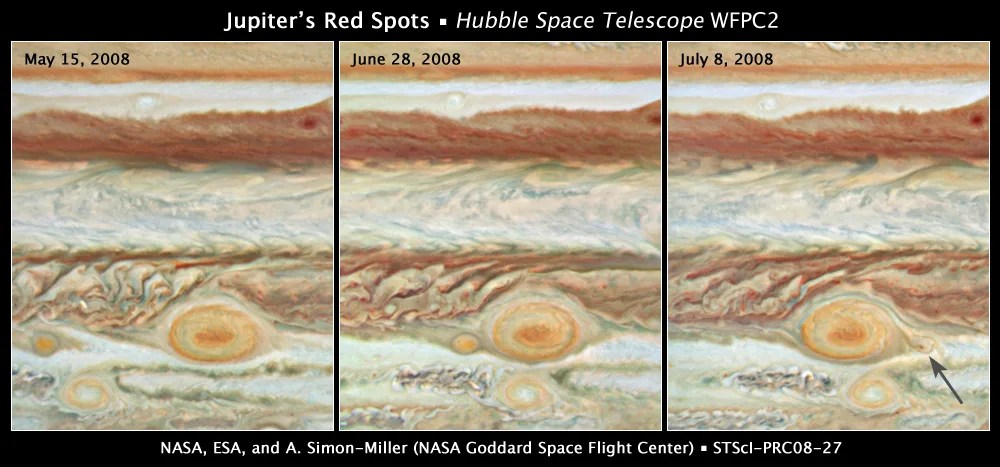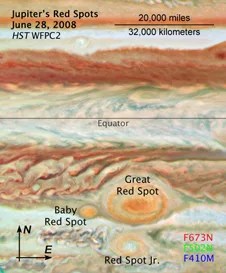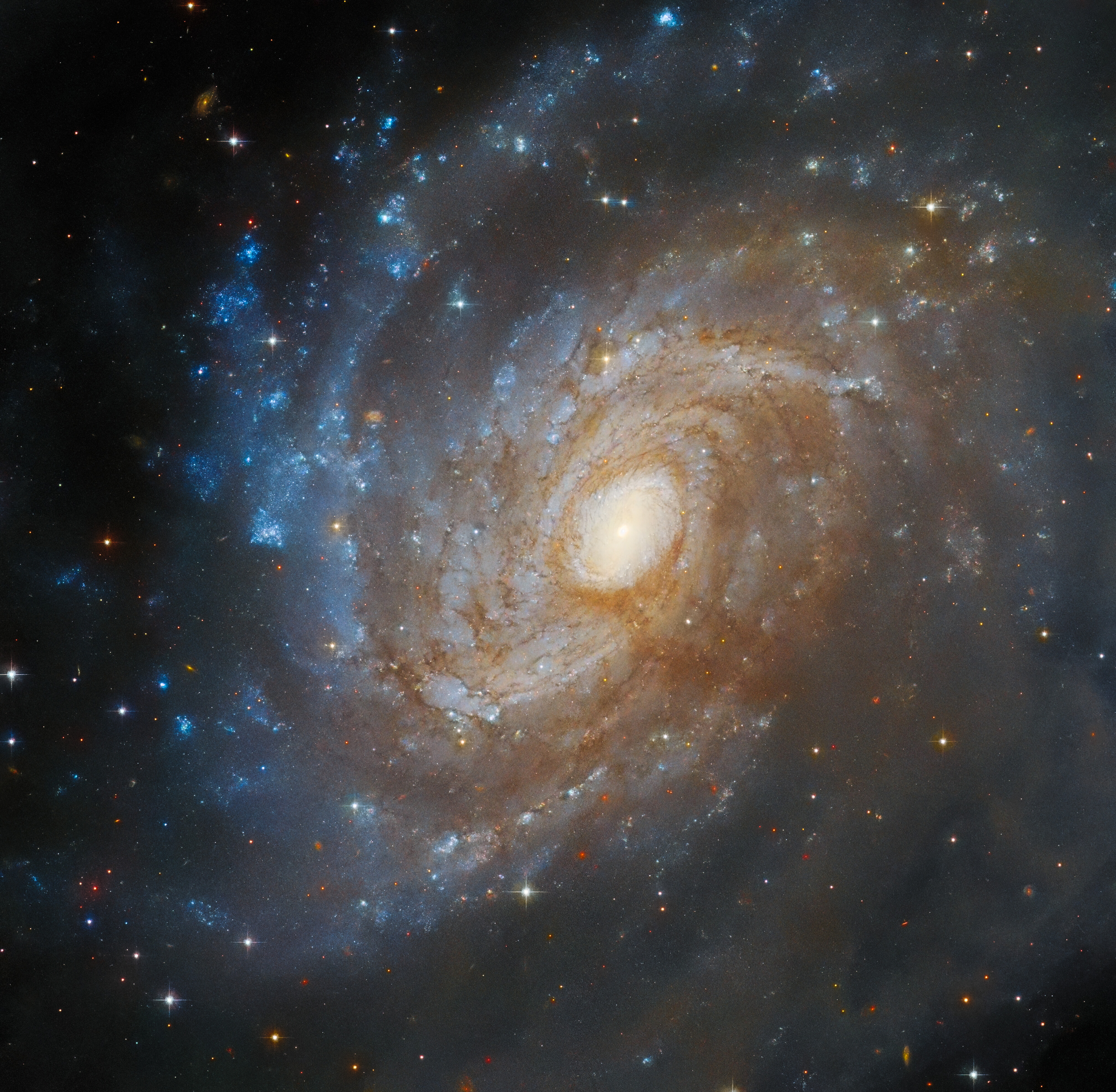2 min read

Release No.: STScI-PRC08-27
Credit:
NASA, ESA, A. Simon-Miller (Goddard Space Flight Center), N. Chanover (New Mexico State University) and G. Orton (Jet PropulsionLaboratory)
This sequence of Hubble Space Telescope images offers an unprecedentedview of a planetary game of Pac-Man among three red spots clusteredtogether in Jupiter's atmosphere.
The time series shows the passage of the "Red Spot Jr." in a band ofclouds below (south) of the Great Red Spot (GRS). "Red Spot Jr." firstappeared on Jupiter in early2006 when a previously white storm turned red. This is the second time,since turning red, it has skirted past its big brother apparentlyunscathed.

But this is not the fate of "baby red spot," which is in the samelatitudinal band as the GRS. This new red spot first appeared earlierthis year. The baby red spot gets ever closer to the GRS in this picturesequence until it is caught up in the anticyclonic spin of the GRS. Inthe final image the baby spot is deformed and pale in color and has beenspun to the right (east) of the GRS. (Amateur astronomers' observationsconfirm that this is the baby spot that migrated around the GRS.) Theprediction is that the baby spot will now get pulled back into the GRS"Cuisinart" and disappear for good. This is one possible mechanism thathas powered and sustained the GRS for at least 150 years.
These three natural-color Jupiter images were made from data acquired onMay 15, June 28, and July 8, 2008 by the Wide Field Planetary Camera 2(WFPC2). Each one covers 58 degrees of Jovian "latitude" and 70 degreesof "longitude" (centered on 5 degrees South latitude and 110, 121 and 121 degrees Westlongitude, respectively).
The Hubble Space Telescope is a project of international cooperationbetween NASA and the European Space Agency (ESA) and is managed byNASA's Goddard Space Flight Center (GSFC) in Greenbelt, Md. The SpaceTelescope Science Institute (STScI) conducts Hubble science operations.The institute is operated for NASA by the Association of Universitiesfor Research in Astronomy, Inc., Washington, DC.
For more images, visit:
For more information on this story, contact:
Ray Villard
Space Telescope Science Institute, Baltimore, Md.
410-338-4514
Amy Simon-Miller
NASA Goddard Space Flight Center, Greenbelt, Md.
301-286-6738







